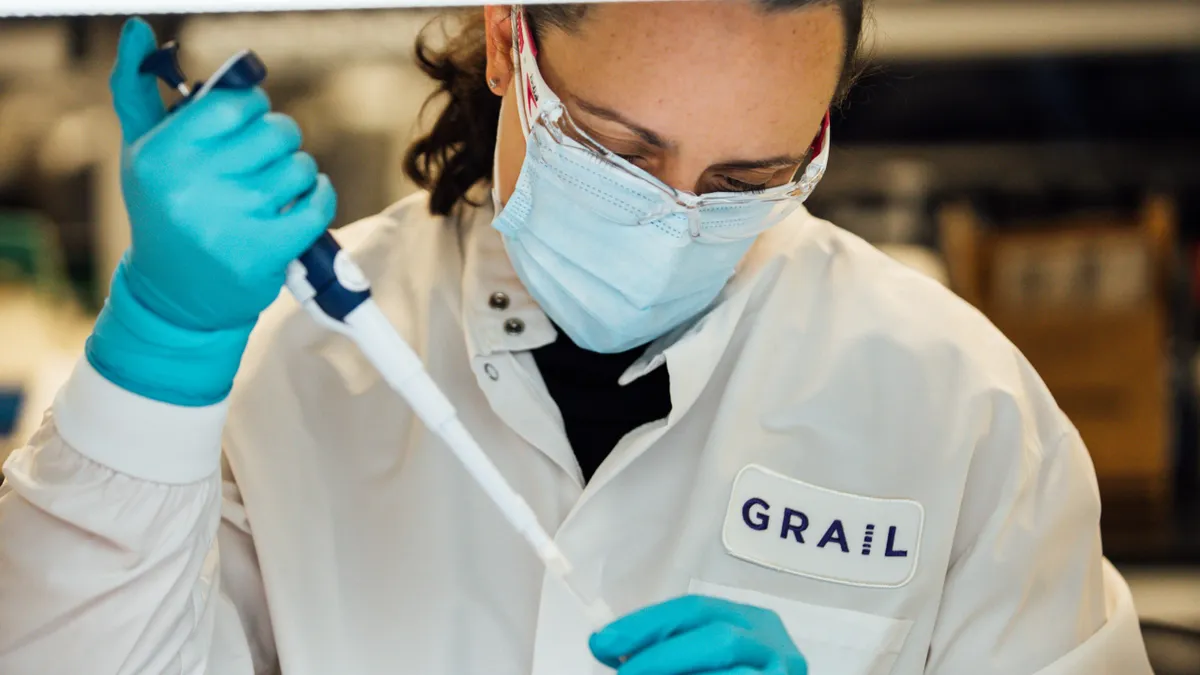Dive Brief:
- Venture capital funding for digital health startups increased in the first quarter as the sector notched some large investment rounds among more established companies, according to a report by venture capital firm and consultancy Rock Health.
- Digital health companies raised more cash across a similar deal count in the first quarter, increasing the average deal size to $24.4 million compared with $15.5 million in the fourth quarter last year.
- The first quarter often beats the previous period when it comes to funding totals, but the increase also demonstrates the return of late-stage investment, Rock Health said. The quarter’s median deal size for Series D rounds and later was $105 million — the first time the metric has risen above $100 million since 2021.
Dive Insight:
The digital health sector saw investment skyrocket to record-breaking levels in 2021, but funding fell back to earth the following year — leaving startups to juggle fewer funding opportunities and often inflated valuations inked during the pandemic-era investment boom.
Funding held relatively steady in 2023 and 2024. Last year, digital health investment nearly matched the amount raised in 2019, adjusted for inflation.
Digital health funding boosted by late-stage deals in Q1
Now, the funding landscape is characterized by a “David and Goliath” dynamic: Small, early stage startups boost the number of deals, while the biggest funding rounds are notched by more established firms or companies prioritized by major investors, according to Rock Health.
Overall, digital health startups raised $3 billion across 122 deals in the first quarter, compared to $1.8 billion in 118 deals in the fourth quarter. Earlier stage raises, including seed, Series A and Series B rounds, made up more than 80% of those labeled deals.
The quarter also included five Series D raises, including three mega-deals, or rounds worth $100 million or more. Those large fundraises boosted the quarter’s median Series D, or later size, to $105 million, nearly double the $55 million median deal size seen last year.
The return of larger late-stage rounds comes as healthcare — and financial markets in general — face growing uncertainty as President Donald Trump takes the helm for his second term.
Digital health startups will need to “leapfrog,” or use shifts in the market to find ways to improve their position, according to Rock Health.
One method is through mergers and acquisitions — especially strategic purchases used to add new features and capabilities. The report found 67% of the M&A in the first quarter involved a digital health startup buying another startup, compared with 53% across 2024.
That kind of dealmaking tends to increase when acquisition targets are cheap and buyers have more cash on hand, according to Rock Health.
“That dynamic persists today: some digital health companies are still navigating the fundraising fallout from the peaks of 2020-2021, making them prime acquisition targets, while others have managed their balance sheets or raised enough capital to ‘buy’ assets rather than build internally,” the report authors wrote.
Another method is through modular technology stacks, which allow companies to more easily switch out components in their infrastructure — key in the fast-moving artificial intelligence space, according to the report.
Meanwhile, some companies are working together in partner networks. For example, Amazon’s Benefits Connector aims to help users enroll in digital health programs covered by their health plans or employers.
Larger companies can also engage more directly with startups that could be angling to disrupt their business models, like Eli Lilly working with telehealth company Ro to offer the weight loss drug Zepbound.
“Instead of viewing innovators as outright competitors, these engagements position larger enterprises as partners, investors, or future acquirers of potential rivals,” the report’s authors wrote.













